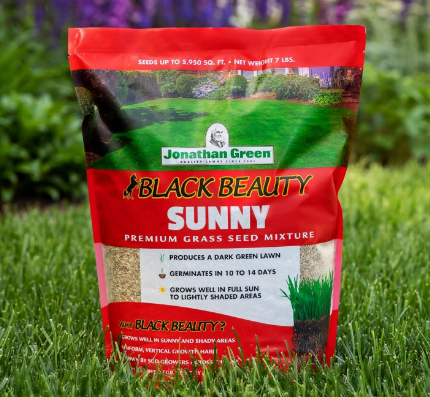It takes more than great grass seeds to have a great lawn. Sometimes, it takes some effort. One of the tasks that people always seem to focus on is sowing and reseeding on the lawn.
One way to reduce the time and effort required to do this chore is to sow seeds in the winter, a process known as dormant seeding.

Can You Sow Grass in Winter?
Grass can be sown in winter, known as dormant seeding. It is best done in a place where there is a lot of snowfall and the temperature is consistently cold, and the ground will freeze until spring.
As long as you use grass species that can tolerate lower temperatures, such as some Kentucky grasses, some ryegrass varieties, and some tall fescue, you should have no problem sowing in winter.
Grass seeds will remain dormant throughout the winter until they thaw and germinate as the temperature rises.
Dormant Sowing: How to Sow Grass Seeds in Winter
It’s easy to sow grass in winter. Preparing the lawn and soil for the seeds you want to sow requires only a bit of preparation.
- Mow the lawn as short as possible. Reduce the lawn mower to its lowest setting and mow the grass two to three times. Usually, this is not healthy for your lawn, but doing so is known as scalping your lawn.
- Inspect the area you plan to sow with a wire rake, scraping as much of the soil surface as you can. Your lawn is ready to start planting. The best way to sow your lawn is to use a broadcaster.
- Hand-held broadcasters or wheeled seeders will do. It’s even better if you can schedule time to do this before you expect it to rain. Now, just let the natural cooling and warming processes of the winter come into play.
- As the ground moves, grass seeds will remain in contact with the ground, absorb moisture, and begin to germinate as the temperature rises.
Winter Care Sowing Grass
Dormant seeding is not effective in all places and may require additional care in areas that are not suitable for this method of seeding. The most important thing for dormant seeds to function is moisture.
The best conditions for dormant sowing to work are when the snow-covered ground does not melt until spring in winter, or when temperatures remain cold and precipitation rates are high.
If you live where you don’t have either of these substances, you may need to occasionally spray the area that has been sown.

Another problem may be the protection of sown areas that are not covered with snow. Snow cover protects the seeds from being eaten by wild animals or blown away by the wind. Covering the newly sown area with a thin layer of straw can help protect the lawn until it sprouts in the spring.
Either way, dormant seeding is a great way to save time, effort, and sometimes even money on sowing your lawn and replacing your turf. Even a few extra steps needed to protect the seeds you planted during the winter months are nothing compared to replanting your lawn on a hot summer day or calling a lawn company to do it for you.
Frequently Asked Questions
-
What is the best grass seed for winter sowing?
Any grass can be used for winter sowing, but the best option to give your lawn the best chance of success is perennial ryegrass or Kentucky grass.
-
Should grass seeds be planted before winter?
Different grass seeds need to be sown at different times, so the question of when to plant a certain seed depends on the species, variety, or variety. Ultimately, any seed can be planted at any time with a certain level of success, but for the highest success rate, always follow the recommendations for the seeds you plant.
-
Is it OK to sprinkle grass seeds before snow?
This method has its advantages and disadvantages. The snow will keep the seeds in contact with the soil and expand and contract as the temperature fluctuates, allowing them to interact naturally with the soil. The negative effects are a lower germination rate, as well as the possibility of premature thawing and germination, as well as late thawing frosts that can damage newly sprouted grass.





